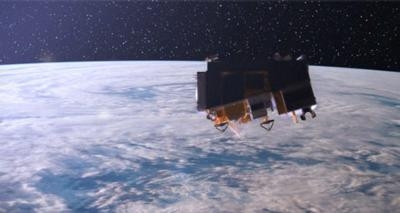Meteorologist Verner Suomi Recognized By The Space Agency
NASA has renamed its newest Earth-observing satellite in honor
of the late Verner E. Suomi, a meteorologist at the University of
Wisconsin who is recognized widely as "the father of satellite
meteorology." The announcement was made Jan. 24 at the annual
meeting of the American Meteorological Society in New Orleans.

NASA launched the National Polar-orbiting Operational
Environmental Satellite System Preparatory Project, or NPP, on Oct.
28, 2011, from Vandenberg Air Force Base in California. NPP was
renamed Suomi National Polar-orbiting Partnership, or Suomi NPP.
The satellite is the first designed to collect critical data to
improve short-term weather forecasts and increase understanding of
long-term climate change. "Verner Suomi's many scientific and
engineering contributions were fundamental to our current ability
to learn about Earth's weather and climate from space," said John
Grunsfeld, associate administrator of NASA's Science Mission
Directorate in Washington. "Suomi NPP not only will extend more
than four decades of NASA satellite observations of our planet, it
also will usher in a new era of climate change discovery and
weather forecasting."
The Suomi NPP mission is a bridge between NASA's Earth Observing
System satellites to the next-generation Joint Polar Satellite
System, or JPSS, a National Oceanic and Atmospheric Administration
(NOAA) program. JPSS is the civilian component of the former
National Polar-orbiting Operational Environmental Satellite System
(NPOESS), which was reorganized by the Obama Administration in
2010. "The new name now accurately describes the mission," said
Michael Freilich, director of the Earth Science Division in NASA's
Science Mission Directorate. "Suomi NPP will advance our scientific
knowledge of Earth and improve the lives of Americans by enabling
more accurate forecasts of weather, ocean conditions and the
terrestrial biosphere. The mission is the product of a partnership
between NASA, NOAA, the Department of Defense, the private sector
and academic researchers."
Verner Suomi pioneered remote sensing of Earth from satellites
in polar orbits a few hundred miles above the surface with Explorer
7 in 1959, and geostationary orbits thousands of miles high with
ATS-1 in 1966. He was best known for his invention of the
"spin-scan" camera which enabled geostationary weather satellites
to continuously image Earth, yielding the satellite pictures
commonly used on television weather broadcasts. He also was
involved in planning interplanetary spacecraft missions to Venus,
Jupiter, Saturn, Uranus and Neptune.

Suomi spent nearly his entire career at the University of
Wisconsin-Madison, where in 1965 he founded the university's Space
Science and Engineering Center with funding from NASA. The center
is known for Earth-observing satellite research and development. In
1964, Suomi served as chief scientist of the U.S. Weather Bureau
for one year. He received the National Medal of Science in 1977. He
died in 1995 at the age of 79.
"It is fitting that such an important and innovative partnership
pays tribute to a pioneer like Verner Suomi," said Mary Kicza,
assistant administrator for NOAA's Satellite and Information
Service. "Suomi NPP is an extremely important mission for NOAA. Its
advanced instruments will improve our weather forecasts and
understanding of the climate and pave the way for JPSS, our next
generation of weather satellites."
Suomi NPP currently is in its initial checkout phase before
starting regular observations with all of its five instruments.
Commissioning activities are expected to be completed by March.
(Images provided by NASA)
 ANN's Daily Aero-Term (05.07.25): Terminal Radar Service Area
ANN's Daily Aero-Term (05.07.25): Terminal Radar Service Area ANN's Daily Aero-Linx (05.07.25)
ANN's Daily Aero-Linx (05.07.25) Classic Aero-TV: Anousheh Ansari -- The Woman Behind The Prize
Classic Aero-TV: Anousheh Ansari -- The Woman Behind The Prize NTSB Prelim: Bell 206B
NTSB Prelim: Bell 206B Airborne-NextGen 05.06.25: AF Uncrewed Fighters, Drones v Planes, Joby Crew Test
Airborne-NextGen 05.06.25: AF Uncrewed Fighters, Drones v Planes, Joby Crew Test




